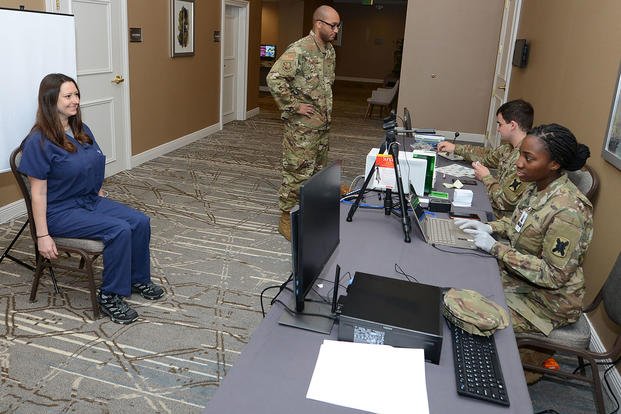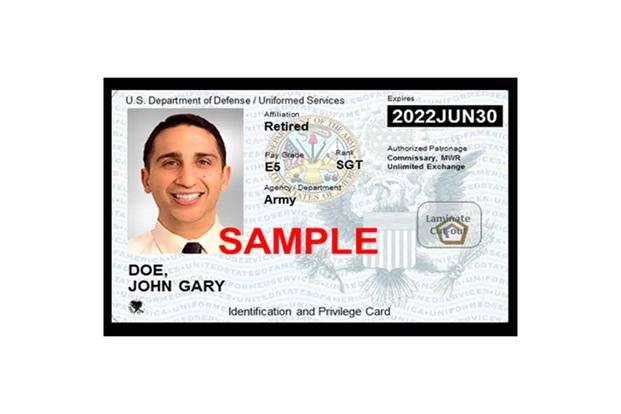

The Military ID card is an essential part of accessing your benefits, without it you may not be able to get on base, go to the commissary, child care, or get health care.
The Department of Defense issues eligible dependents and other eligible individuals a distinct identification card (ID) authorizing them to receive Uniformed Services benefits and privileges.
Starting in 2020 all new dependent and retiree ID cards are the same color thanks to the Next Generation Uniformed Services Identification Card. The hard plastic card looks more like the Common Access Card (CAC) used by military members. They include sections indicating the holder's status or affiliation and, for retirees, their military service and rank at retirement.

The services the card holder is authorized to access are listed on the front of the card, such as commissary exchange and certain morale, welfare and recreation privileges, as well as expiration date and first and last name. The back of the card includes a barcode that can be scanned and the Dependent ID number.
Are you a new military family member trying to get a new military ID card for the first time? Use this guide.
Family members and survivors of deceased veterans who are age 65 or older, can get a permanent ID card. However, holders of the old style paper laminate ID cards with an indefinite expiration date must get the card replaced with the new Next Generation Uniformed Services Identification Card by 2026.
In the past, reserve component (RC) family members and other dependents received a DD Form 1173-1, the DoD Guard and Reserve Dependent ID Card (red). Since the rollout of the Next Generation Uniformed Services Identification Card those dependents now instead receive the standard white dependent and retiree card, with their relationship and sponsor affiliation notes as Guard or Reserve.
Jim Absher is Military.com's former benefits editor and columnist. He joined the Navy to see the world and later realized the world is two-thirds water. He also worked for the Department of Veterans Affairs in field offices and Washington, D.C. before coming to Military.com in 2015. Read Full Bio
© Copyright 2024 Military.com. All rights reserved. This article may not be republished, rebroadcast, rewritten or otherwise distributed without written permission. To reprint or license this article or any content from Military.com, please submit your request here.